Experience the Serenity of Qingjiang Gallery: An Insider’s Travel Guide

An Essential Guide to Visiting Qingjiang Gallery
In This Guide
- An Essential Guide to Visiting Qingjiang Gallery
- The Rich History and Legends of Qingjiang Gallery
- Main Highlights: What You Absolutely Can’t Miss
- Planning Your Visit: A Practical Guide
- Tickets: Prices, Booking, and Tips
- How to Get There: A Complete Transportation Guide
- Local Cuisine and Accommodation Nearby
- Frequently Asked Questions
- Final Thoughts on Your Trip
Nestled in the stunning landscapes of Hubei Province, Qingjiang Gallery is a hidden gem that perfectly marries natural beauty with rich cultural heritage. Often described as “the 800-mile Qingjiang River is as beautiful as a painting,” this scenic area embraces visitors with its breathtaking views and vibrant history. The gallery is not only a feast for the eyes but also a cultural tapestry woven from the stories of the Ba and Tujia people, indigenous communities that have thrived in this region for centuries.
What to Expect
Visitors to Qingjiang Gallery can expect to immerse themselves in a variety of activities that showcase the area’s spectacular scenery and cultural significance. The gallery offers two main tour routes, each designed to provide a unique perspective on the breathtaking landscapes and local traditions:
-
Holy Land Tour:
Embark on a leisurely boat tour through the Reflection Gorge Scenic Area. Here, you will encounter iconic landmarks such as the Camel Drinking Water Peak and the majestic Peacock Open Screen Mountain. The journey also includes a visit to the Geheyan Dam and 30° North Latitude Island, culminating in a hike to Wuluo Zhongli Mountain, the birthplace of the Tujia people. This round-trip experience typically lasts around 4 to 5 hours. -
Shadow Painting Tour:
For those who prefer to explore on foot, this tour involves walking along the picturesque cliff plank roads. Highlights include stunning views from He Xinlang to Guolongmen. Depending on your pace, you can choose to continue to other scenic spots such as Ruanlanggui Pier, where you can catch a boat back to your starting point. This tour offers a flexible experience, allowing you to take in the beauty at your leisure, usually within a timeframe of 2 to 3 hours.
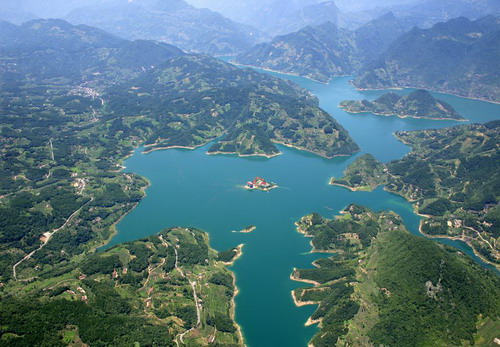
Qingjiang Gallery.
Practical Information
- Location: Longzhouping Town, Changyang County, Yichang City, Hubei Province
- Opening Hours: Daily from 8:30 AM to 5:00 PM
- Recommended Duration: 2 to 5 hours
- Contact: For ticket inquiries, reach out to +86-717-5335806 or +86-717-5319721.
Nearby Attractions
While visiting Qingjiang Gallery, consider exploring additional nearby attractions for a well-rounded experience:
– Wuluozhongli Mountain: A site rich in cultural history and natural beauty.
– Xiangwang Temple: An ancient temple offering tranquility and insights into local religious practices.
– Daoyingxia: A picturesque gorge that’s perfect for photography and hiking enthusiasts.
Tips for Your Visit
- Best Time to Visit: Spring (April to June) and Autumn (September to November) are ideal seasons to enjoy mild weather and vibrant scenery.
- What to Bring: Comfortable walking shoes, a camera for capturing the stunning views, and local currency for any on-site purchases.
- Stay Hydrated: Bring water, especially if you plan to hike.
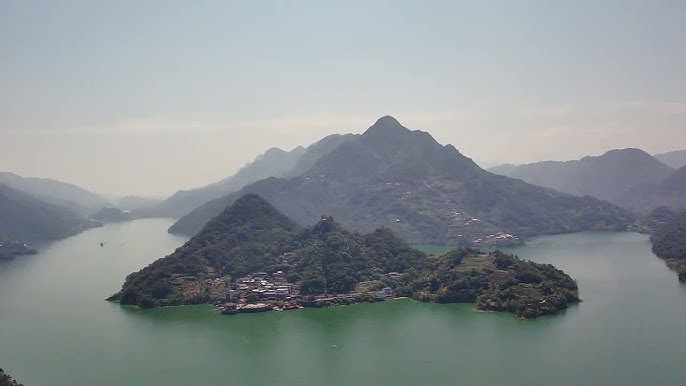
Qingjiang Gallery.
In summary, a visit to Qingjiang Gallery promises a harmonious blend of nature and culture, making it an essential stop for any traveler eager to explore the depths of China’s scenic and historical treasures. Whether you choose to glide through the emerald waters or trek along the charming pathways, this enchanting destination will leave you with lasting memories and a deeper appreciation for China’s rich cultural landscape.
The Rich History and Legends of Qingjiang Gallery
Nestled in the picturesque landscape of Yichang City in Hubei Province, Qingjiang Gallery is not merely a feast for the eyes; it is a vibrant tapestry woven from the rich history and legends of the Ba and Tujia peoples, who have called this region home for centuries. The gallery is often described as an “800-mile river that resembles a painting,” with its stunning scenery and cultural heritage deeply intertwined, making it a must-visit for travelers seeking to delve into China’s historical narratives.
The Cultural Heart of the Ba and Tujia Peoples
Qingjiang Gallery is situated in an area historically known as the homeland of the Ba people, one of the ancient ethnic groups of China. Renowned for their unique customs and folklore, the Ba are believed to have inhabited these lands for millennia, leaving behind a legacy that continues to shape the local culture today. The Tujia people, often considered the descendants of the Ba, also contribute to the region’s cultural richness. Their vibrant traditions, such as the intricate Tujia embroidery and distinctive architectural styles, can be experienced throughout the gallery and its surroundings.
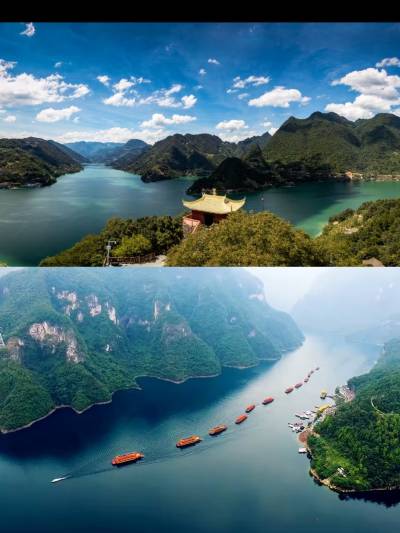
Qingjiang Gallery.
Legends of Qingjiang River
The Qingjiang River itself is steeped in legend. Local folklore speaks of the river as a divine entity, often personified in tales told by the elders. One popular legend narrates the story of the river’s origin, where it is said that a celestial maiden fell in love with a mortal man. Their love was so profound that it cried out to the heavens, causing the gods to weep, which in turn formed the river that now flows through Changyang County. This legend underscores the profound connection between the people and their natural environment, emphasizing the reverence with which they regard the Qingjiang.
Scenic Wonders and Historical Significance
Visitors to the Qingjiang Gallery can explore the breathtaking Reflection Gorge, where towering cliffs seemingly embrace the emerald waters of the river. This area is rich in geological and historical significance, showcasing the natural forces that have shaped the landscape over millions of years. Notable sites include the Camel Drinking Water Peak and the Qingjiang Buddha, both of which are steeped in local lore. The Camel Drinking Water Peak is said to resemble a camel, symbolizing endurance and resilience, traits that resonate deeply with the local populace.
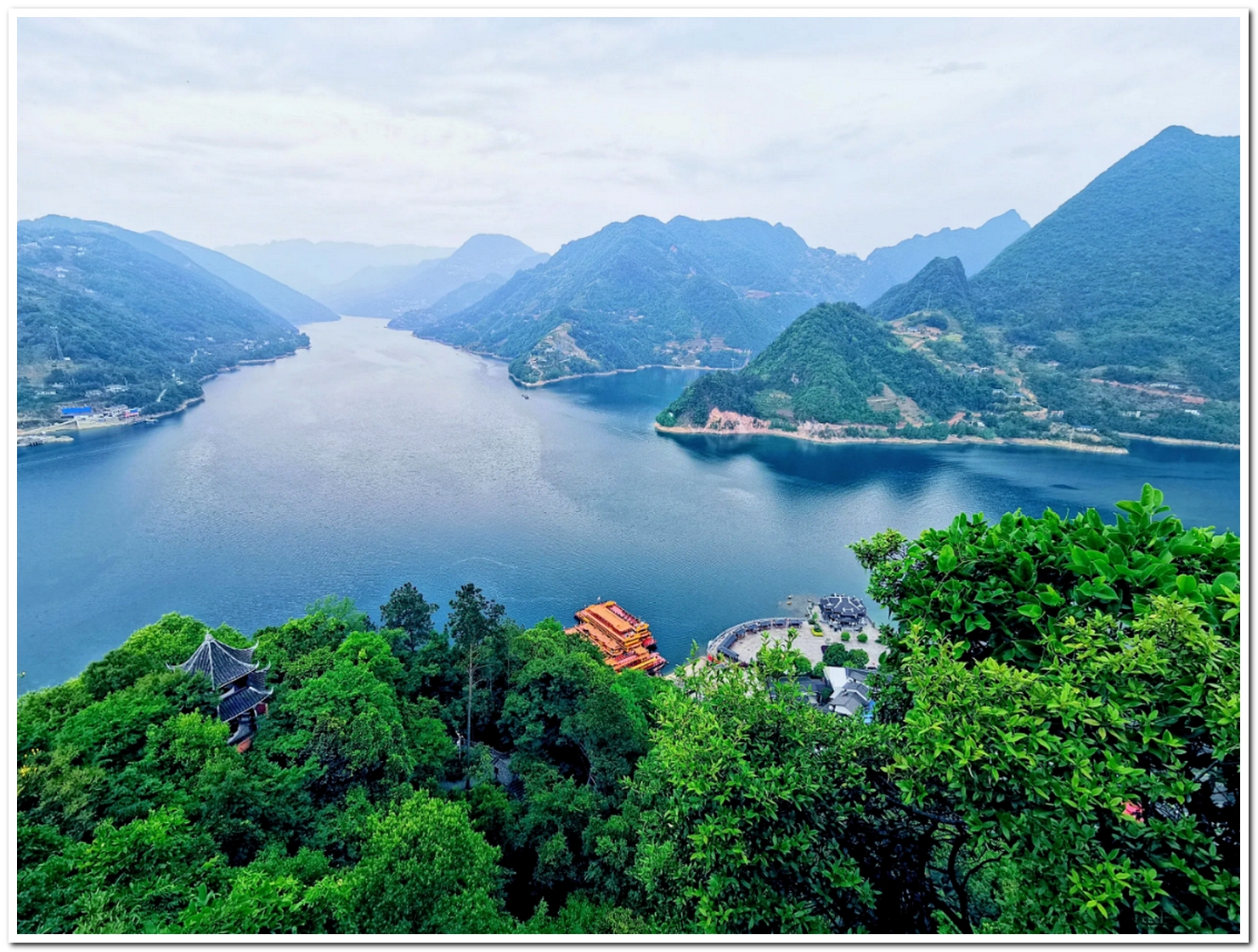
Qingjiang Gallery.
The Tujia Birthplace: Wuluo Zhongli Mountain
Among the highlights of Qingjiang Gallery is Wuluo Zhongli Mountain, revered as the birthplace of the Tujia people. This majestic peak not only offers stunning panoramic views but also serves as a site of spiritual significance. According to local legend, the mountain is believed to be a gathering place for ancestral spirits, where rituals and celebrations of the Tujia culture still take place today. Hiking up this mountain provides a unique opportunity to connect with the spirits of the past while enjoying the breathtaking vistas that have inspired artists and poets alike.
Conclusion
A visit to Qingjiang Gallery is not just an escape into nature; it is an immersive journey into the heart of Chinese history and culture. From the enchanting legends of the Qingjiang River to the rich traditions of the Ba and Tujia peoples, every corner of this scenic area tells a story. For international travelers seeking to understand the complexities and beauty of China’s cultural heritage, Qingjiang Gallery offers an unforgettable experience that captures the essence of a land steeped in history and legend.
Main Highlights: What You Absolutely Can’t Miss
Discover the Splendor of Qingjiang Gallery
Nestled within Changyang County in Yichang, Hubei Province, the Qingjiang Gallery is a breathtaking testament to nature’s artistry. Often dubbed “the 800-mile Qingjiang River is as beautiful as a painting,” this scenic spot invites you to explore its stunning landscapes, rich cultural history, and vibrant local traditions. Here are the main highlights you absolutely can’t miss during your visit:
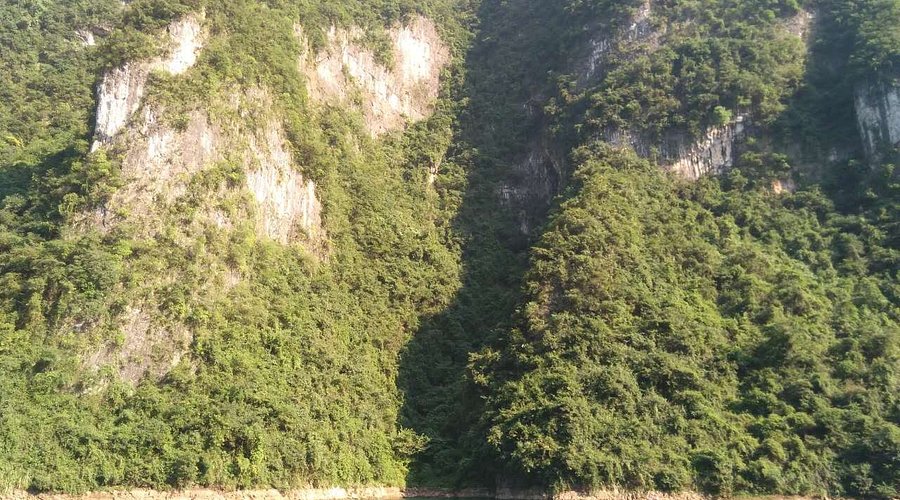
Qingjiang Gallery.
1. Scenic Boat Tours
Embark on a memorable Holy Land Tour, sailing through the Reflection Gorge. Your journey includes mesmerizing views of iconic landmarks such as:
- Camel Drinking Water Peak: A natural rock formation resembling a camel, perfect for photo ops.
- Peacock Open Screen Mountain: Known for its unique shape and vibrant flora.
- Qingjiang Buddha: A striking statue that pays homage to the region’s spiritual heritage.
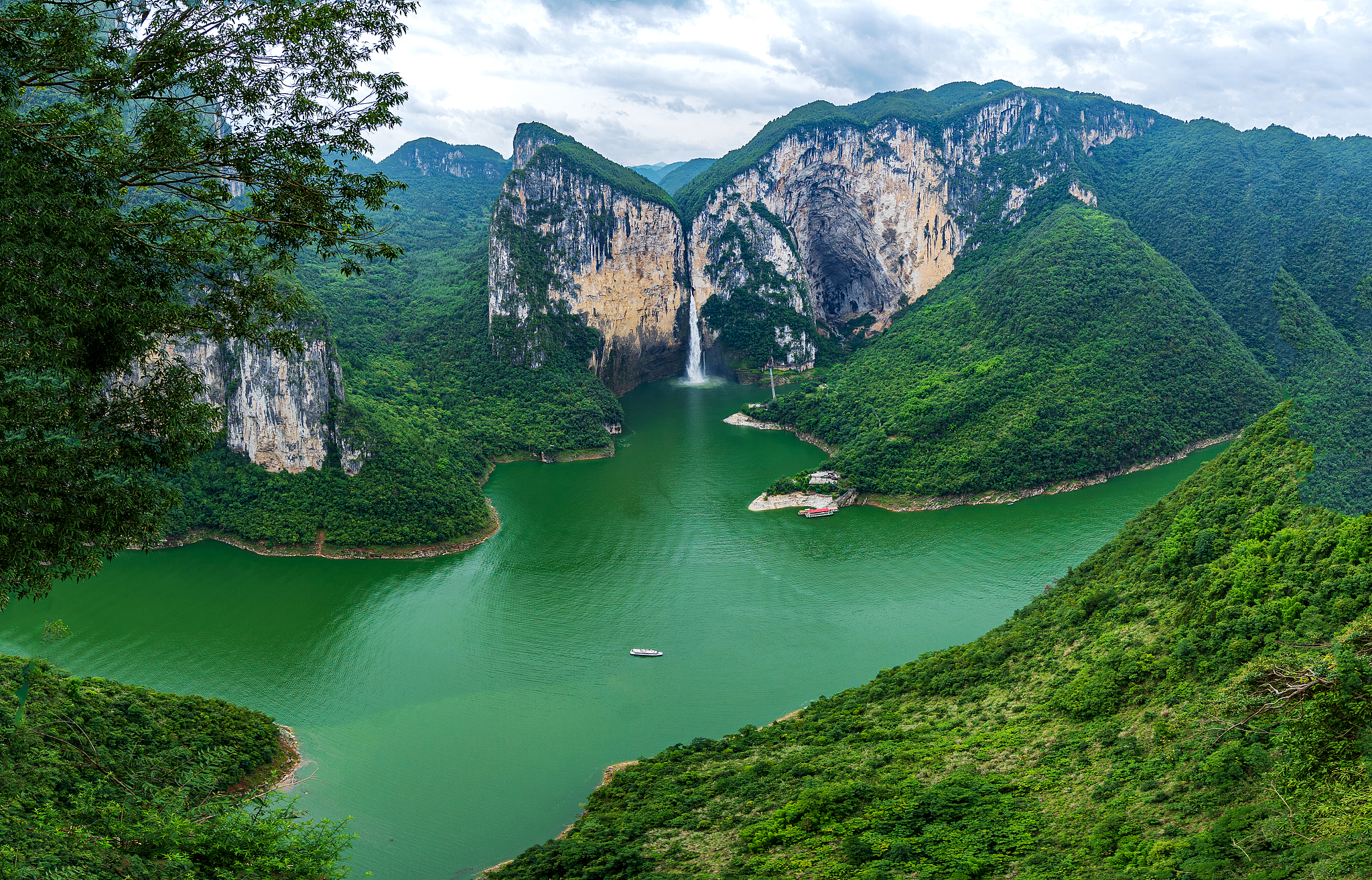
Qingjiang Gallery.
Don’t forget to take in the sights of Geheyan Dam and 30° North Latitude Island while cruising along the river.
2. Hiking the Cliff Plank Road
For the adventurous souls, the Shadow Painting Tour offers a chance to walk along the stunning Reflection Gorge Cliff Plank Road. This scenic route allows you to witness breathtaking vistas of the surrounding landscape, including:
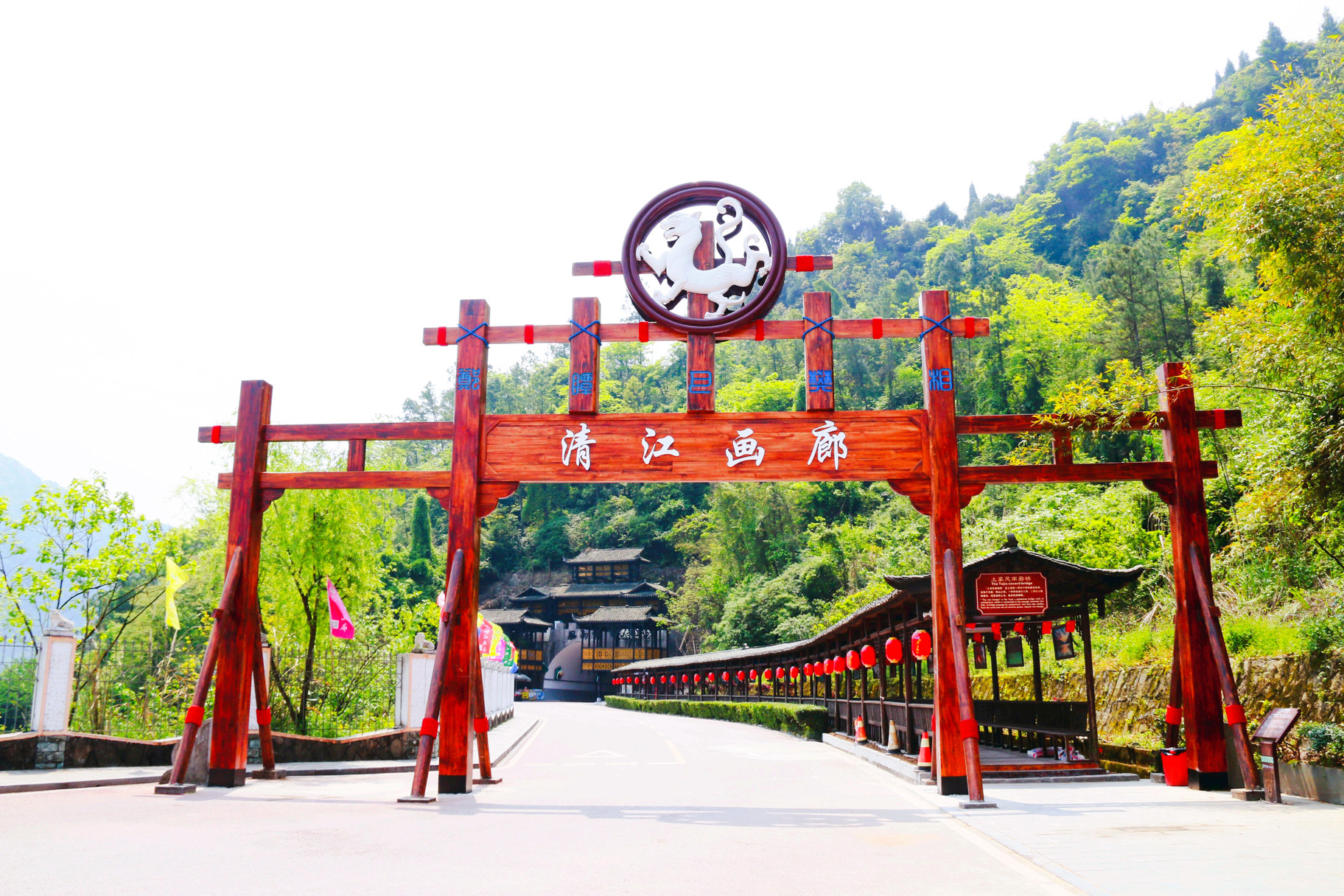
Qingjiang Gallery.
- He Xinlang: A picturesque viewpoint.
- Lingyun Road: A serene path ideal for capturing the beauty of nature.
- Yan Guilai and Xiake Road: Perfect spots for leisurely strolls.
Choose your trail length based on your comfort—whether you opt for a quick hour-long trek or a more extended two-hour excursion.
3. Wuluo Zhongli Mountain
A visit to Wuluo Zhongli Mountain is essential for anyone interested in the Tujia culture, as it is considered the birthplace of the Tujia people. The climb is rewarding, offering not only a physical challenge but also panoramic views of the Qingjiang River and its surroundings.
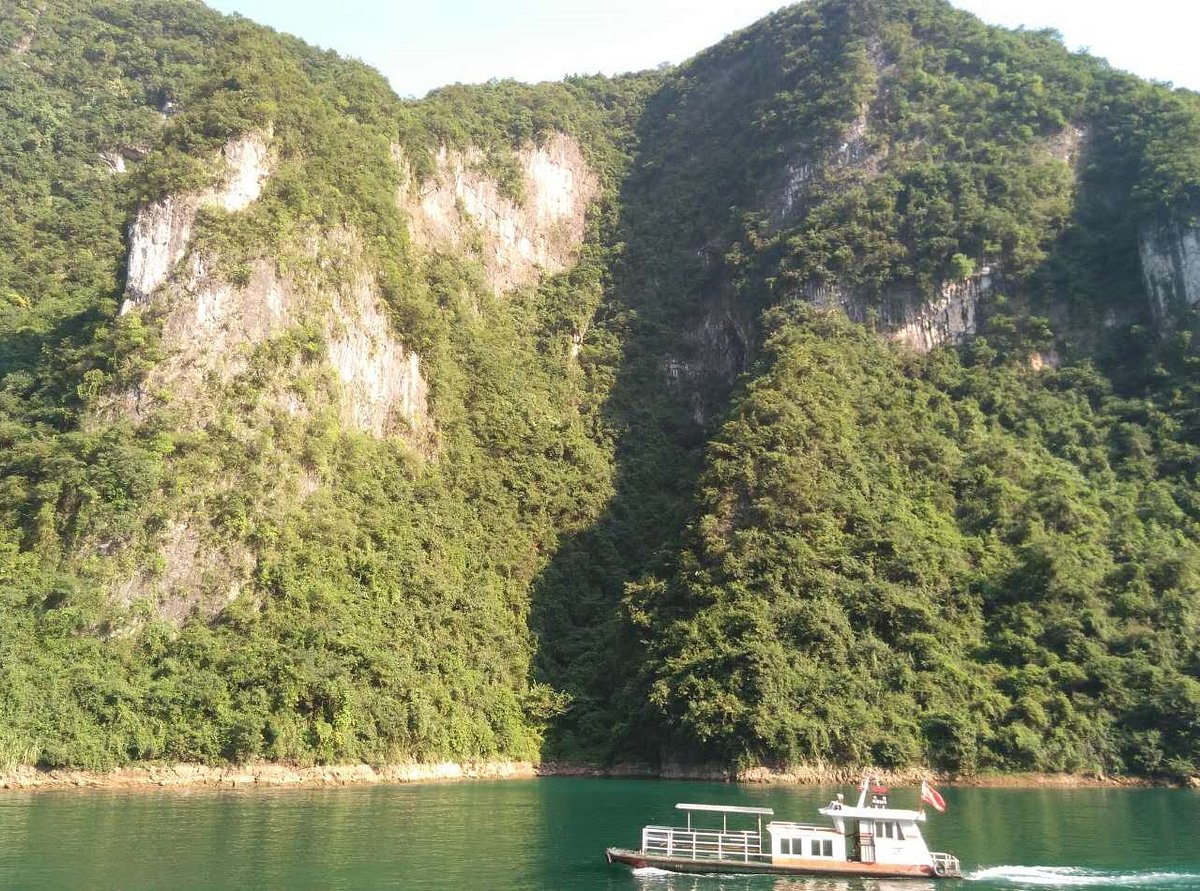
Qingjiang Gallery.
4. Cultural Insights
Immerse yourself in the local culture by exploring Xianren Village, where you can learn about the customs and traditions of the Tujia and Ba ethnic groups. This area is a treasure trove of history, making it a must-visit for those keen to understand the region’s rich heritage.
5. Nature’s Masterpiece
The natural beauty of Qingjiang Gallery is often described as a “living landscape painting.” From the emerald waters of the Qingjiang River to the dramatic cliffs and waterfalls, every corner of this gallery of nature offers a new perspective. Be prepared to capture postcard-perfect photographs at every turn!
6. Plan Your Visit
- Recommended Duration: Spend 2 to 5 hours exploring the area to fully appreciate its beauty.
- Best Time to Visit: The ideal seasons are spring (April to June) and autumn (September to November) when the weather is mild and the scenery is most vibrant.
- Opening Hours: The gallery is open from 8:30 AM to 5:00 PM.

Qingjiang Gallery.
Concluding Thoughts
Qingjiang Gallery is more than just a destination; it’s an experience that combines stunning natural beauty with profound cultural significance. Whether you’re gliding along the river on a boat tour or hiking through lush trails, every moment spent here is a step into a harmonious blend of nature and heritage. Don’t miss the opportunity to explore this picturesque gem in Hubei!
Planning Your Visit: A Practical Guide
Your Essential Guide to Visiting Qingjiang Gallery
Nestled in the picturesque Changyang County of Yichang City, Hubei Province, Qingjiang Gallery is a natural wonder that offers a unique glimpse into the harmonious interplay between China’s breathtaking landscapes and its rich cultural heritage. Renowned for its stunning river vistas and dramatic gorges, this destination is ideal for international travelers eager to explore China’s history and natural beauty. Here’s everything you need to know for a memorable visit.

Qingjiang Gallery.
Getting There
Location:
Qingjiang Gallery is located in Longzhouping Town, Changyang County, Yichang, Hubei Province. The scenic area can be reached via public transportation or by car.
- By Air: The nearest major airport is Yichang Sanxia Airport, which offers domestic flights from major cities.
- By Train: Yichang Railway Station is well-connected to various cities across China. From the train station, you can take a bus or taxi to reach the gallery.
- By Bus: Local buses frequently run from Yichang to Changyang County, making it convenient for those using public transport.
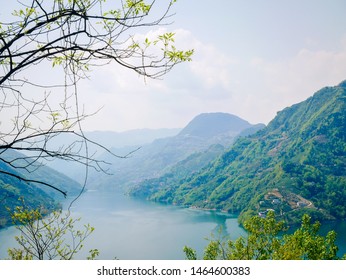
Qingjiang Gallery.
Opening Hours and Admission
Hours:
The gallery is open daily from 8:30 AM to 5:00 PM.
Recommended Duration:
Allocate 2 to 5 hours to fully enjoy the natural splendor and various activities available.
Admission Fees:
Entry fees start at approximately TWD 23.52, but be sure to check local listings for the most up-to-date pricing and any available promotions.
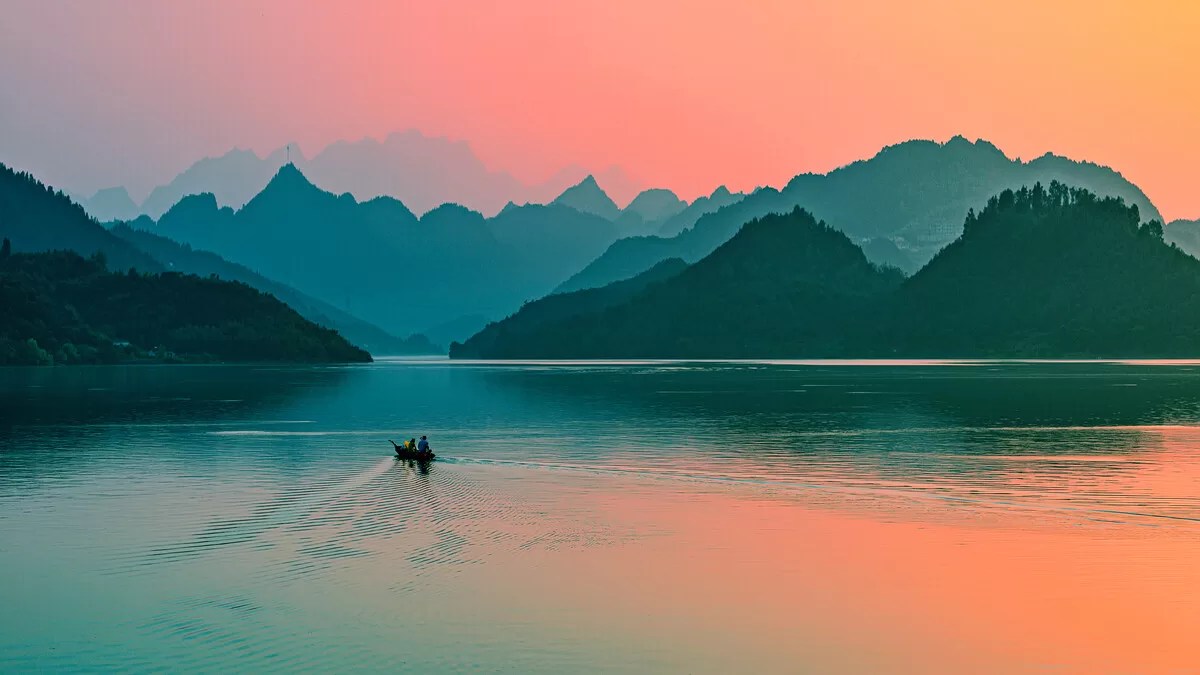
Qingjiang Gallery.
What to Expect
Qingjiang Gallery is often described as a living painting, with its emerald waters, towering cliffs, and lush vegetation. Visitors can choose from two primary tour routes:
-
Holy Land Tour:
This boat tour offers stunning views of the Reflection Gorge Scenic Area, where you can see iconic sights such as Camel Drinking Water Peak, Peacock Open Screen Mountain, and the Qingjiang Buddha. The trip also includes a glimpse of the Geheyan Dam and Pingluo Lake. Expect a round-trip journey lasting about 4-5 hours. -
Shadow Painting Tour:
This option involves a scenic hike along the Reflection Gorge Cliff Plank Road, where you’ll encounter breathtaking views and landmarks such as He Xinlang and Yan Guilai. You can customize your tour duration, with options to hike to the second service area (about 1 hour) or Ruanlanggui Pier (about 2 hours) before taking a boat back.
Amenities and Services
Qingjiang Gallery provides a range of amenities to enhance your experience:
- Parking: Available for those driving to the gallery.
- Wi-Fi: Free Wi-Fi access in certain areas.
- Luggage Storage: Convenient storage services for your belongings.
- Restrooms: Clean facilities are available throughout the area.
- In-Park Transport: Shuttle services to help you navigate the scenic area easily.
Nearby Attractions
While Qingjiang Gallery itself is a highlight, the surrounding area offers even more to explore:
- Wuluo Zhongli Mountain: Renowned as the birthplace of the Tujia people, this mountain offers excellent hiking opportunities.
- Xiangwang Temple: A historical site worth visiting for its cultural significance.
- Daoyingxia Scenic Spot: Known for its stunning natural beauty, perfect for photography lovers.
Tips for Travelers
- Best Time to Visit: Spring (April to June) and autumn (September to November) offer mild weather and vibrant scenery.
- Local Cuisine: Don’t miss the chance to try local specialties such as Three Gorges tofu and Qingjiang fish.
- Photography: Bring your camera! The sunrise over the river or the sunset behind the cliffs provides breathtaking photo opportunities.
- Engagement: Share your experiences on social media to inspire others to explore this hidden gem!
Final Thoughts
Qingjiang Gallery is not just a feast for the eyes but also a rich tapestry of cultural history, making it an essential stop for any traveler interested in the depth of China’s landscapes and people. Whether you are sailing on its tranquil waters or trekking through its scenic trails, every moment spent here will resonate with the beauty and heritage of this remarkable region. Pack your bags, and get ready to embark on a journey that promises to be as enlightening as it is enchanting!
Tickets: Prices, Booking, and Tips
When planning your visit to the stunning Qingjiang Gallery in Yichang, Hubei Province, it’s essential to be informed about ticket prices, booking options, and helpful tips to enhance your experience. This natural wonder, often described as a living landscape painting, offers unforgettable boat tours and hiking trails that immerse you in the breathtaking beauty of the region.
Ticket Prices
- General Admission: Tickets typically start at approximately TWD 23.52 (around USD 0.77). However, prices may vary based on the season and specific tour packages.
- Boat Tours: The scenic boat tours, which provide a unique perspective of the Reflection Gorge and its prominent features, usually have additional costs. Expect prices to range from USD 10 to USD 30 depending on the duration of the tour and the amenities included.
- Hiking Access: If you’re opting for the Shadow Painting Tour, where you explore the scenic areas on foot, entry fees are usually included in the general admission price.
Booking Options
- Online Reservations: It is highly recommended to book your tickets in advance through reputable travel websites like Trip.com or local platforms. Online booking not only guarantees your spot but may also offer promotional discounts.
- On-Site Purchase: While you can purchase tickets at the entrance, be prepared for potential long lines, especially during peak tourist seasons (spring and autumn). If you prefer spontaneity, arriving early in the day can help you secure tickets more easily.
- Guided Tours: Consider joining a guided tour for a more in-depth experience. Many local operators provide comprehensive packages that include transportation, meals, and knowledgeable guides who can share insights into the cultural and historical significance of the area.
Tips for a Seamless Experience
- Best Time to Visit: The optimal months to explore Qingjiang Gallery are from April to June and September to November. During these periods, the weather is mild, and the scenery is at its most picturesque.
- Recommended Duration: Allocate between 2 to 5 hours for your visit, allowing ample time for both the boat tour and hiking.
- Transportation: The local bus system in Yichang is efficient, and taxis are readily available. Downloading the “Yichang Travel” app may provide you with real-time transport updates and make your journey smoother.
- What to Bring: Comfortable walking shoes are a must for hiking, along with sunscreen and a hat for sun protection. Don’t forget your camera; the landscapes are incredibly photogenic!
- Local Cuisine: After exploring, indulge in local dishes such as Three Gorges tofu and Qingjiang fish at nearby restaurants.
By keeping these tips in mind and planning ahead, your visit to Qingjiang Gallery will not only be enjoyable but also deeply enriching, allowing you to appreciate the natural beauty and cultural heritage of this remarkable region.
How to Get There: A Complete Transportation Guide
Navigating Your Way to Qingjiang Gallery
Embarking on a journey to the enchanting Qingjiang Gallery in Changyang County, Yichang, Hubei Province, is an adventure that immerses you in both nature’s splendor and the rich tapestry of Chinese culture. Here’s your complete guide to getting there efficiently and comfortably.
Getting to Yichang
By Air:
Yichang Sanxia Airport (YIH) is the nearest airport to Qingjiang Gallery, offering domestic flights from major cities like Beijing, Shanghai, and Guangzhou. Upon arrival, you can choose from several transport options to reach the gallery.
By Train:
Yichang Railway Station is well-connected to various parts of China. High-speed trains run frequently from cities such as Wuhan, Chengdu, and Xi’an. The train journey offers a scenic view of the countryside, setting the tone for your adventure ahead.
By Bus:
Yichang has an efficient bus system, with the Yichang Long-distance Bus Station providing services to numerous locations. Buses from Wuhan and other nearby cities are readily available.
From Yichang to Qingjiang Gallery
Once in Yichang, you have several options to reach Qingjiang Gallery:
1. By Private Car or Taxi:
The most convenient way is to hire a taxi or use a ride-hailing app like Didi. The drive from Yichang city center to Qingjiang Gallery takes approximately 1.5 to 2 hours, depending on traffic. This option allows for flexibility and comfort, especially if you are traveling with a group.
2. By Public Bus:
For a more budget-friendly option, take a local bus from Yichang to Changyang. Buses frequently depart from the Yichang Long-distance Bus Station. Once you arrive in Changyang, you can take a taxi or another local bus to reach the gallery. Keep in mind that this may take longer but offers an authentic local experience.
3. Organized Tours:
Many travel agencies offer guided tours that include transportation from Yichang to Qingjiang Gallery. This option includes not only transport but also a knowledgeable guide to enrich your experience with insights into the local culture and history.
Navigating the Gallery
Upon arrival at Qingjiang Gallery, you’ll find the site is well-equipped for visitors. Here’s what to expect:
- Parking: If driving, ample parking is available near the entrance.
- In-park Transport: For those who wish to explore the expansive area, in-park transport options such as shuttles are available.
- Accessibility: The scenic area is designed with pathways, making it accessible for most visitors, including those with mobility challenges.
Tips for a Smooth Journey
- Best Time to Visit: Spring (April to June) and autumn (September to November) are ideal for pleasant weather and stunning views.
- Plan Ahead: Check bus schedules and train times in advance to ensure a smooth connection.
- Stay Connected: Download local travel apps for real-time updates on public transport options and schedules.
Whether you are cruising along the serene waters of the Qingjiang River or trekking through the breathtaking landscapes, getting to Qingjiang Gallery is part of the adventure. Prepare for a trip that blends natural beauty with cultural richness in one of China’s hidden gems!
Local Cuisine and Accommodation Nearby
When exploring the stunning vistas of Qingjiang Gallery, it’s essential to immerse yourself not only in the breathtaking scenery but also in the rich local culture through its cuisine and accommodations. Here’s a curated guide to dining and staying nearby that will elevate your travel experience.
Culinary Delights Near Qingjiang Gallery
The region surrounding Qingjiang Gallery offers a delightful array of local dishes that reflect its cultural heritage. Here are some must-try culinary treats:
-
Three Gorges Tofu (三峡豆腐): A local specialty, this tofu is renowned for its smooth texture and is often served in a savory broth or stir-fried with seasonal vegetables. It’s a simple yet flavorful dish that should not be missed.
-
Braised Chicken (红烧鸡): A staple in the area, this dish is known for its rich, soy-sauce-based sauce infused with spices. The tender chicken pairs perfectly with steamed rice, making for a hearty meal after a day of exploration.
-
Pan-fried Potatoes (煎土豆): Crispy on the outside and soft on the inside, these potatoes are usually seasoned with local spices and herbs, providing a comforting side dish that complements any meal.
-
Qingjiang Fish (清江鱼): Freshly caught from the Qingjiang River, this fish is often prepared steamed with ginger and scallions. The freshness of the ingredients ensures a delightful tasting experience.
-
Local Snacks: Don’t miss out on street vendors selling delicious local snacks such as radish dumplings (萝卜饺子) and sour bamboo shoots (酸笋), which make for perfect bites during your hikes.
Where to Stay
Finding the right accommodation enhances your visit to Qingjiang Gallery by providing comfort and a taste of local hospitality. Here are some recommended places to stay:
Riverside Inn (江边客栈)
- Description: This charming inn offers stunning views of the Qingjiang River and the surrounding mountains. It features traditional Tujia-style architecture that immerses you in local culture.
- Amenities: Free Wi-Fi, breakfast included, and guided tour arrangements available.
- Price Range: Affordable rates, starting around $30 per night.
Changyang Hotel (长阳大酒店)
- Description: A modern hotel equipped with all the amenities you need for a comfortable stay. It’s conveniently located near the entrance to Qingjiang Gallery.
- Amenities: Restaurant, fitness center, and free parking.
- Price Range: Mid-range pricing, typically around $60 per night.
Qingjiang Villa (清江别墅)
- Description: For those seeking a more luxurious experience, Qingjiang Villa offers spacious rooms with private balconies overlooking the river. The serene environment is perfect for relaxation after a day of adventure.
- Amenities: Spa services, an on-site restaurant featuring local cuisine, and guided tours.
- Price Range: Higher-end accommodations, starting at $100 per night.
Final Thoughts
As you plan your visit to Qingjiang Gallery, remember that the experience extends beyond its natural beauty. Indulge in the local cuisine and choose accommodations that reflect the warmth and culture of the region. Each meal and stay will deepen your connection to this breathtaking area, making your journey all the more memorable.
Frequently Asked Questions
Frequently Asked Questions About Qingjiang Gallery
1. Where is Qingjiang Gallery located?
Qingjiang Gallery is situated in Longzhouping Town, Changyang County, Yichang City, Hubei Province, China. It’s renowned for its stunning natural scenery along the Qingjiang River.
2. What are the recommended visiting hours?
The Qingjiang Gallery is open daily from 8:30 AM to 5:00 PM. It’s advisable to arrive early to fully enjoy the beautiful landscapes and avoid crowds.
3. How long should I plan to spend at Qingjiang Gallery?
Visitors typically spend 2 to 5 hours exploring the gallery. Depending on your chosen tour route, you can tailor your experience to fit your schedule.
4. What types of tours are available?
There are two main tour routes:
– Holy Land Tour: A boat tour through the Reflection Gorge, featuring views of various scenic spots such as Camel Drinking Water Peak and Qingjiang Buddha. This tour lasts approximately 4-5 hours.
– Shadow Painting Tour: A hiking experience along the Reflection Gorge Cliff Plank Road, which allows you to explore beautiful sights at your own pace. This tour can take between 2 to 3 hours.
5. Are there any amenities available at the gallery?
Yes, the Qingjiang Gallery offers several amenities, including:
– Parking
– Wi-Fi
– Phone charging stations
– Luggage storage
– In-park transport
– Restrooms
– Convenience store
6. What are the ticket prices for Qingjiang Gallery?
Ticket prices start at approximately TWD 23.52. It’s best to check current prices and any available promotions before your visit.
7. What nearby attractions should I consider visiting?
In addition to Qingjiang Gallery, recommended nearby attractions include:
– Wuluozhongli Mountain
– Xiangwang Temple
– Daoyingxia
– Xianrenzhai Scenic Spot
These sites offer a rich blend of natural beauty and cultural heritage.
8. When is the best time to visit Qingjiang Gallery?
The ideal times to visit are during spring (April to June) and autumn (September to November) when the weather is mild, and the scenery is at its most picturesque.
Final Thoughts on Your Trip
As your journey through the enchanting Qingjiang Gallery comes to a close, you are left with not just memories, but a profound appreciation for the rich tapestry that is Chinese history and culture. This breathtaking destination, often referred to as a living landscape painting, offers international travelers a unique glimpse into the natural beauty and cultural heritage of the Hubei province.
Embrace the Scenic Splendor
The Qingjiang River, winding through dramatic cliffs and lush greenery, has inspired poets and artists alike. Whether you chose the Holy Land Tour, gliding along the Reflection Gorge, or the Shadow Painting Tour, wandering the scenic trails, each moment spent here is an opportunity to connect with nature and history. The majestic peaks, such as the Camel Drinking Water Peak and the serene waters at Pingluo Lake, serve as stunning backdrops for reflection and rejuvenation.
Immerse Yourself in Local Culture
Beyond the captivating vistas, the region is steeped in the traditions of the Ba and Tujia peoples. Engage with the local culture by tasting traditional dishes, such as the renowned Three Gorges tofu and savoring the hospitality of riverside inns. Each meal and interaction is a step deeper into understanding the customs that have shaped this area for centuries.
Plan Your Return
As you leave Qingjiang Gallery, consider how you might share this experience with others. The breathtaking landscapes and rich cultural narratives are stories waiting to be told. Whether you are a first-time visitor or planning a return trip, this destination promises to unveil new layers of beauty and history with every exploration.
Final Thoughts
Travelers, as you pack your bags and bid farewell to Qingjiang Gallery, remember that the journey is as significant as the destination. Cherish the moments of awe and wonder, and let the serenity of this picturesque landscape inspire you long after your visit. In the words of the ancients, “Traveling through mountains and rivers enriches the soul.” May your adventures continue to unfold, revealing the myriad wonders of this vast and fascinating world!